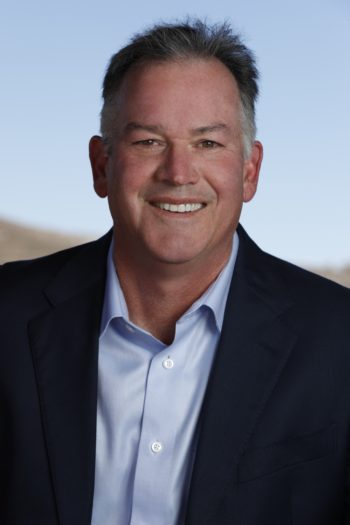Our latest economic crisis has inflation raging throughout the global economy. While foundations respond to reductions in their asset values and damage done to stakeholders, this crisis could yet wreak more havoc — a lot more. And that means the nonprofit sector faces a sliding scale of potential outcomes, from a strong recovery to a perfect storm, when parts of the global economy that are too big to fail, fail.
Some readers might dismiss this and what follows as alarmist nonsense. To be fair, that’s my default setting, so I get it, but challenging assumptions is a best practice, especially when so much is at stake.
A Similar Fate
The current mess ramped up when the U.S. Federal Reserve (Fed) decided not to act despite concerns from credible critics that inflation was mounting and interest rates were too low. Chair Jerome Powell initially even told us the Fed was “not even thinking about thinking about” raising interest rates to fight inflation.
History will not be kind to this decision.
Foundations can avoid a similar fate by thinking through contingency plans with the hope, of course, they are never needed. In this post, I’ll expand on what foundations should consider, what a perfect storm could look like for nonprofits, what obstacles stand in the way of contingency planning, and how a deep crisis could test foundation commitments to diversity, equity, and inclusion.
Rinse and Repeat
Economic disasters tend to unfold gradually, then suddenly, when contagion kicks in from the daisy chain of second and third order impacts. This gradual aspect is a sinister obstacle because it allows time to rationalize a lesser degree of damage or reject further planning through false hope in a recovery.
For example, stock and bond markets have experienced significant downturns across the globe — an historic one in the case of “risk-free” bonds — and leading economic indicators are concerning, to say the least. Yet, there will be foundation staff and boards who gravitate to riding out the crisis with marginal, if any, changes to their grantmaking aside from reduced funding levels from the decline in assets.
And why not? We’ve seen this movie before. Economic bubbles burst, recessions follow, and just when epic disaster looms, the Fed saves the day. Rinse and repeat.
So this crisis will probably play out the same way — unless it doesn’t.
Uncharted Waters
Here are several reasons why this time might be different and, historically, only one or two would be enough to cause severe damage:
- Central banks could fail to get it right or their cure could set the course for a deeper crisis to come.
- The Fed has never fought inflation in the U.S. after such an unprecedented amount of money printing.
- The global economy has never entered a crisis with such extreme levels of debt.
- The war in Ukraine could escalate to involve others and, even if contained, the economic war Putin triggered by weaponizing oil and natural gas supplies has led to deep and potentially long lasting global impacts.
- The interconnected modern world economy has never faced a global pandemic. China’s commitment to lockdowns will continue to roil global supply chains and variants continue to emerge, which means the most lethal and contagious one remains possible.
These are some of the known challenges and unknown challenges could still come. In short, we are well into uncharted waters.
The Perfect Storm
Since extreme circumstances push the boundary of possibilities, nobody should ignore the chance of a perfect storm hammering nonprofits. From this crisis or a future one, nonprofits could face compounding difficulties through:
- A large surge in demand for their services;
- Budgets shredded by a leap in operating costs from both increased demand and inflation;
- A major shortfall in fundraising, due to their donors own financial issues; and,
- Government spending cuts at the local, state, and federal levels.
Such sector-wide misery could see many small nonprofits fold, removing the critical services they provide. Most mid-size and large nonprofits could face bleak financial situations, with some of these shuttered as well, while the survivors take years to recover.
Less Obvious Challenges
The obvious challenge for foundations would be channeling effective support to a deteriorating nonprofit sector.
Less obvious challenges would arise, too:
- Most foundation personnel would find they have little, if any, grantmaking experience in the more extreme scenarios.
- If the gradually-then-suddenly pattern holds, foundations would need to avoid delays that bring unnecessary harm.
- Since economic crises have a greater impact on our lowest socio-economic levels, the equity portion of foundations’ commitment to diversity, equity, and inclusion could be tested.
To meet each of these challenges in a timely and thoughtful manner requires advanced planning.
First Principles
Contingency plans could run into the sector’s ever present debate over indirect costs (overhead) and operating support. So let’s remove this obstacle with a principled approach that applies to all foundations, regardless of size or stature, and in good times or bad.
Consider the following first principles:
- Every grant should represent a foundation’s most effective use of funds.
- Every grant evaluation should assess the organization’s capacity to address the conditions on the ground identified in the proposal. Of course, evaluations can vary in form and function.
- No foundation is above giving grants for pure operating support or allowing overhead allocations within its grants.

While true in principle, number three is always optional. Yet, it would be nearly impossible to avoid overhead and, possibly, operating support as an economic crisis slides toward the worst case.
Why?
Effective Use of Funds
The most effective use of funds shifts when nonprofit capacities and/or conditions on the ground change, so foundations that do not change accordingly fail to allocate funds in the most effective manner.![]()
A mounting crisis would alter the capacity of potential grantees and the conditions facing people that grantees serve. In both cases, these changes could be dramatic.
A longer view should always be a factor when/if a foundation pivots (e.g. Have we reached the point where immediate needs are more critical than our long-term strategic goals?).
Conditions on the ground can apply narrowly to a particular program or geographic area, or broadly to society at large, while the equity of impact from a crisis is a key factor throughout.
Questions and Considerations
As a starting point, here are questions funders should consider as they develop contingency plans and I’m certain better ones will emerge as the process unfolds.
- How will your foundation monitor the impact of economic conditions on the nonprofit sector?
- What metrics will help monitor the overall health of individual nonprofits?
- What is the most equitable way to assess crisis-driven needs across the nonprofit sector?
- Do you have enough honest relationships with grantees to trust anecdotal feedback for a real-time picture of conditions?
- When should you pause an existing program(s) to direct support to other areas of greater need? If devastation reigns, should you pivot to direct all grants for operating support?
- What do your staff and board need to know and how can they prepare as a crisis deepens?
- How long would it take to implement your plan, if a quick pivot is necessary?
- What are the communication strategies to execute your plan?
The best contingency plans are the ones we never need, yet having them provides peace of mind and an immediate focal point if the worst case arrives suddenly. Meanwhile, the thought exercise of developing plans might inform your grantmaking even for the best of times.
William Keator spent twenty years working in philanthropy, starting in 1995 as the first program officer for the Jacksonville Jaguars Foundation, which supported underserved youth, and concluding as the vice president for programs at the Arthur Vining Davis Foundations. He is the author of When Eagles Launch: Find your Best College and Make it a Foundational Life Experience.




